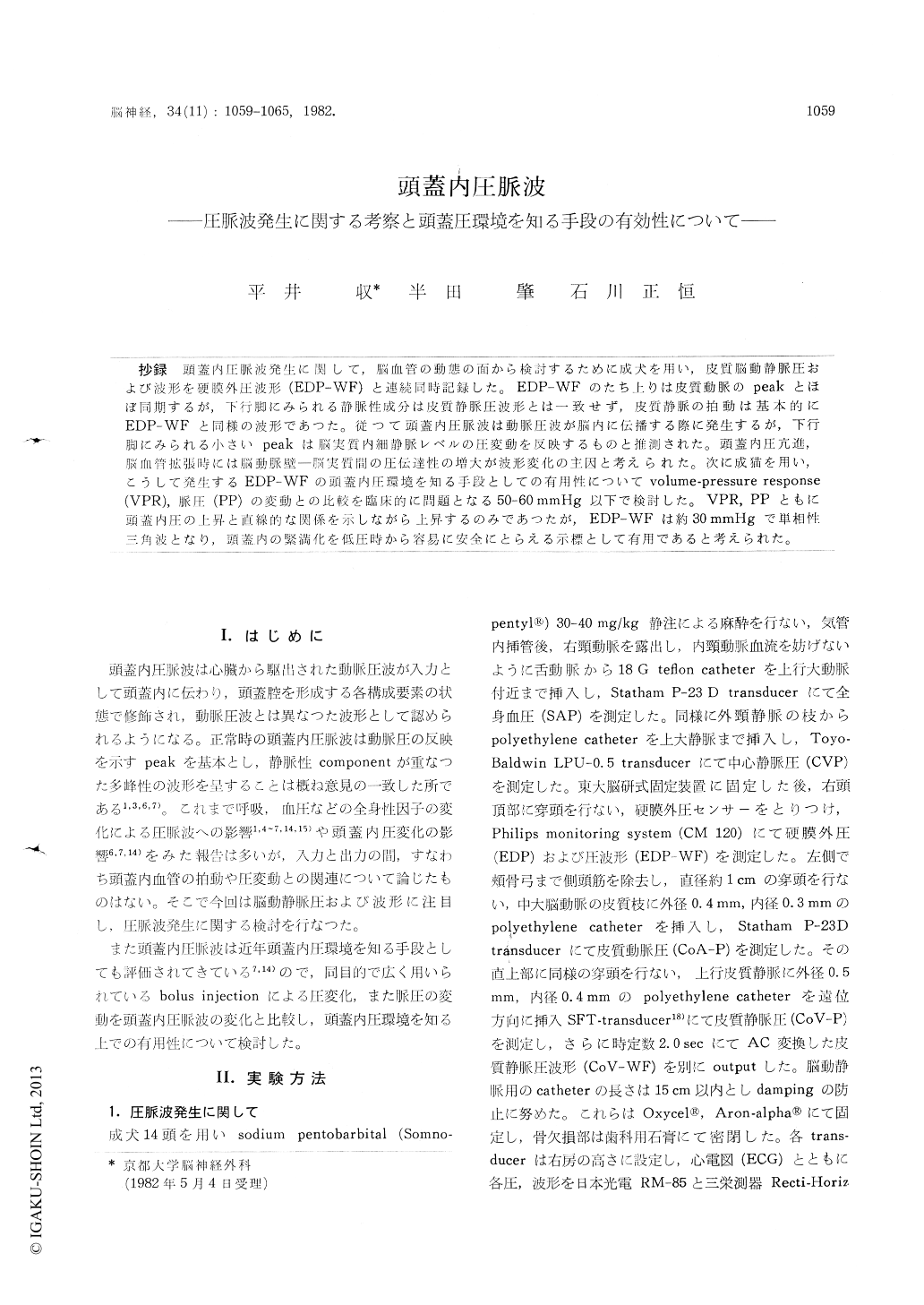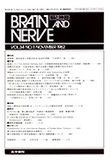Japanese
English
- 有料閲覧
- Abstract 文献概要
- 1ページ目 Look Inside
抄録 頭蓋内圧脈波発生に関して,脳血管の動態の面から検討するために成犬を用い,皮質脳動静脈圧および波形を硬膜外圧波形(EDP-WF)と連続同時記録した。EDP-WFのた上りは皮質動脈のpeakとほぼ同期するが,下行脚にみられる静脈性成分は皮質静脈圧波形とは一致せず,皮質静脈の拍動は基本的にEDP-WFと同様の波形であつた。従つて頭蓋内圧脈波は動脈圧波が脳内に伝播する際に発生するが,下行脚にみられる小さいpeakは脳実質内細静脈レベルの圧変動を反映するものと推測された。頭蓋内圧亢巡,脳血管拡張時には脳動脈壁—脳実質間の圧伝達性の増大が波形変化の主因と考えられた。次に成猫を用い,こうして発〆生するEDP-WFの頭蓋圧環境を知る手段としての有用性についてvolume-pressure response(VPR),脈圧(PP)の変動との比較を臨床的に問題となる50-60mmHg以下で検討した。VPR, PPともに頭蓋内圧の上昇と直線的な関係を示しながら上昇するのみであったが,EDP-WFは約30mmHgで単相性三角波となり,頭蓋内の緊満化を低圧時から容易に安全にとらえる示標として有用であると考えられた。
Epidural pulse waveform is important as an indi-cator of intracranial pressure (ICP) dynamics. In this study, the origin of epidural pulse and the clinical implication of its waveform were investigated, using anesthetized artificially ven-tilated dogs. For this purpose, a cortical artery and a vein were cannulated, and the pressures were recorded simultaneously with epidural pres-sure (EDP), epidural pulse waveform (EDP-WF), systemic arterial pressure measured in a carotid artery (SAP), central venous pressure (CVP) and electrocardiogram.
EDP-WF is composed of several initial peaks and a small delayed peak on the descending limb. The former peaks were slightly delayed from the SAP pulse and were synchronous with the cortical arterial pulse. The latter peak wassynchronous with the atrial "a" wave on CVP, but not with the cortical venous pulse. Moreover, the cortical venous pulse was quite similar to EDP-WF. These findings indicate that the pulsa-tion of the brain may be generated by the pulsa- tile arterial blood flow into the brain, which also affected the pulsation of the cortical vein. The latter peak which was considered to be of venous origin may reflect the dynamics of venules in the brain, not of the cortical vein.
Increase of ICP by constant inflation of the epidural baloon or inhalation of CO2 cause EDP-WF monotonous. It is possible that the trans-mission of arterial pulse into the brain was augu-mented because of the tightness of the brain ordecrease of cerebral vascular tone, although the cortical arterial pressure was not significantly changed or was even slightly decreased.
Using a bolus injection technique, the change of EDP-WF in cats was compared with volume-pressure response (VPR) and pulse pressure (PP) which are reported to be good indicators for ICP dynamics. At about 30mmHg, EDP-WF became monotonous while VPR or PP showed only linear relationships with EDP up to 50 to 60 mmHg. Therefore EDP-WF may provide useful informa-tion about ICP dynamics in a relatively lower pressure range which could not be detected by VPR or PP study.

Copyright © 1982, Igaku-Shoin Ltd. All rights reserved.


